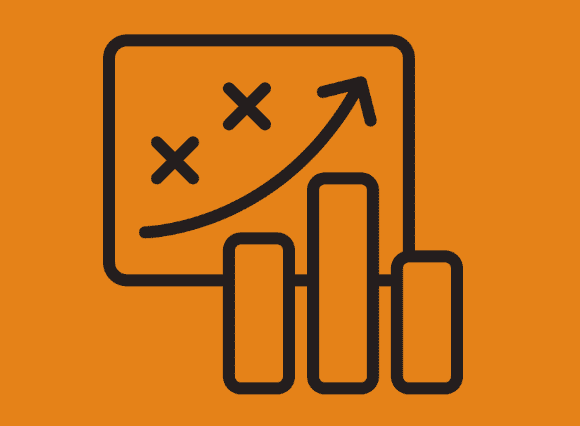Table of Contents
The Evolution of SEO: From Keywords to User Value
The Early Era: Keyword-First Tactics
A decade ago, SEO was littered with exploits in an effort to make ranking easier.
Many webmasters prioritized Exact Match Domains (EMDs)—domains matching target keywords exactly—to signal relevance to search engines, often achieving top rankings regardless of content quality.

I can attest to the fact that these did indeed work very well, as long as the proper content strategy was there to keep the domain name from carrying the entire operation.
Keyword stuffing—repeating target phrases unnaturally—could also trick early algorithms, pushing pages up the SERPs despite poor user experience.
This technique was considered a little more “black hat” than EMDs, which were a lighter shade of grey, comparatively.
The Shift to Quality Signals
Google’s algorithm updates (Panda in 2011, Hummingbird in 2013) began penalizing thin content and prioritizing semantic relevance, marking the decline of purely keyword-centric SEO.
By emphasizing user intent, Google rewarded pages offering genuine answers, ushering in the era of content quality over keyword density.
Around this time, SEOs began echoing what would soon become one of the most overused phrases of the 2010s: “Content is King.”
Today’s Landscape: User-Centric & AI-Driven
In 2025, search comprises traditional organic results plus AI summaries and chat interfaces. Users expect direct, conversational answers—whether in SERP featured snippets or AI chatbots—and LLMs are capable of parsing concepts without exact phrase matching, making pure keyword tactics obsolete.
Many site owners find themselves unable to quit banging the same drum, producing content targeting specific searches or keywords.
Modern SEO must align with how humans and machines now interact with content: through trustworthy, thorough, and structured information.
Pillar 1: High-Quality, People-First Content
The Rise of E-E-A-T
Google’s E-E-A-T framework (Experience, Expertise, Authoritativeness, Trustworthiness) underscores the need for content demonstrating real-world experience and credibility.
Pages authored by recognized experts, containing original research or firsthand insights, are favored over generic summaries, and brands – whether they’re large corporations, small businesses, or individuals – have become more important and distinct than ever.
Comprehensive, In-Depth Content Wins
Long-form content (2,000+ words) that thoroughly addresses user queries earns more backlinks, shares, and time on page—positive engagement signals that boost rankings.
Case studies show that detailed guides can increase organic traffic by up to 200% compared to shorter posts.
Structured Data & Featured Snippets
Implementing schema markup helps search engines understand content context—articles, FAQs, how-to guides—leading to enhanced SERP features like rich snippets and knowledge panels.
Featured snippets capture up to 8.6% of clicks on desktop and 16.2% on mobile for query responses.
Multimedia & Engagement
Integrating images, video, and interactive elements meets diverse user preferences, improving engagement metrics (dwell time, scroll depth) that correlate with higher rankings.
Video transcripts and audio transcriptions further enrich content for both users and search crawlers.
Pillar 2: Authority, Brand Recognition & Trust
Backlinks Are Only the Beginning
High-quality backlinks remain a core ranking factor, but link relevance and publisher reputation now outweigh sheer link volume. Guest posts on authoritative sites, brand mentions in industry publications, and co-branding opportunities boost perceived trust and authority.
Brand Signals & Zero-Click Searches
As zero-click results grow—Google’s own answers occupying the top of SERPs—brand presence in featured snippets and knowledge graphs drives visibility even when users don’t click through. Brands that appear in AI-generated answer boxes or chatbot responses gain a subconscious trust advantage.
Social Proof & Reviews
User reviews on Google Business Profile, Trustpilot, and industry-specific platforms feed into brand trust and local SEO. Positive star ratings can boost click-through rates by up to 25%.
Thought Leadership & Community Engagement
Publishing research reports, whitepapers, and participating in expert panels establishes a brand as an industry authority.
Active community engagement—forums, social media, AMAs—reinforces trust and drives organic brand mentions, a strong co-citation signal.
Pillar 3: Generative-Friendly & Conversational Content
The Emergence of AEO & GEO
With AI chatbots (ChatGPT, Bard) increasingly answering user queries directly, optimizing for “Answer Engine Optimization” (AEO) and “Generative Engine Optimization” (GEO) is crucial. This involves crafting concise, clear responses at the top of pages and structuring content for easy extraction by language models.
Conversational Tone & FAQ Sections
AI systems favor content that mirrors natural language patterns. Incorporating FAQs, question-and-answer blocks, and succinct summaries helps AI tools surface accurate responses.
Context & Prompt Engineering
Embedding context-rich captions, alt text, and metadata aids AI crawlers in understanding content nuances—preventing misinterpretation and ensuring correct AI-generated answers.
Avoiding AI-Generated Spam
As Wired warns, AI can produce “mediocre spam” at scale; maintaining genuine human voice, adding unique insights, and citing credible sources differentiates high-value content from low-quality generative spam.
Pillar 4: Technical Foundations & UX Signals
Core Web Vitals & Performance
Google’s Page Experience update makes Core Web Vitals (LCP, FID, CLS) ranking signals, albeit a weak one, according to Google.
Still, sites optimizing for fast load times and smooth interactivity see higher engagement, and better rankings.
Mobile-First Indexing
With over 60% of searches on mobile, Google predominantly uses the mobile version of content for indexing. Mobile-friendly design and responsive layouts are non-negotiable.
Secure & Accessible
HTTPS encryption and accessible content (alt text, ARIA roles) enhance both user trust and crawlability.
Structured Site Architecture
Logical silo structures, breadcrumb navigation, and XML sitemaps ensure efficient crawl paths, distributing link equity and aiding discoverability.
Comparing 2015 vs. 2025 SEO Tactics
| Aspect | 2015 Focus | 2025 Focus |
|---|---|---|
| Domain Strategy | Exact Match Domains (EMDs) | Branded domains & subdomains for content clusters |
| Keyword Usage | Stuffing & exact matching | Semantic intent, LSI keywords, conversational phrases |
| Content Quality | Thin, SEO-driven articles | In-depth, experience-based, E-E-A-T compliant content |
| Link Building | Volume & directory links | Contextual, high-authority backlinks & brand mentions |
| SERP Features | Organic listings | Featured snippets, zero-click, AI summaries |
| Technical SEO | Basic XML sitemaps & redirects | Core Web Vitals, mobile-first, structured data |
| AI & Automation | Limited | AI-powered content creation, AEO/GEO, predictive SEO |
Actionable Steps for 2025
- Audit for E-E-A-T: Review author bylines, source citations, and update content to reflect firsthand experience and expertise.
- Build Brand Authority: Secure guest posts on top-tier publications, encourage online reviews, and engage in thought leadership.
- Optimize for AI: Add structured FAQs, concise answers, and ensure clarity in headers and metadata for AI extraction.
- Enhance User Experience: Prioritize page speed, mobile usability, and accessibility to meet both user and algorithmic expectations.
- Monitor Emerging Signals: Track AI answer traffic, zero-click impressions, and brand mention analytics to adjust strategies in real time.
Hi, I’m Adam — a Denver-based SEO and content strategist with over 10 years of experience helping websites climb the search rankings and increase conversions. Whether it’s a site audit, keyword strategy, or a full-blown content overhaul, I bring a creative, technical, and human approach to digital marketing.

